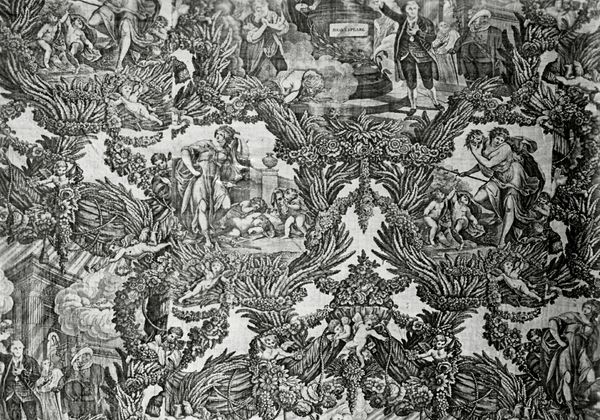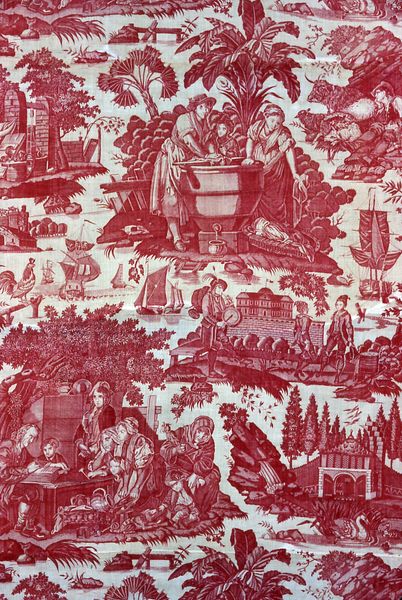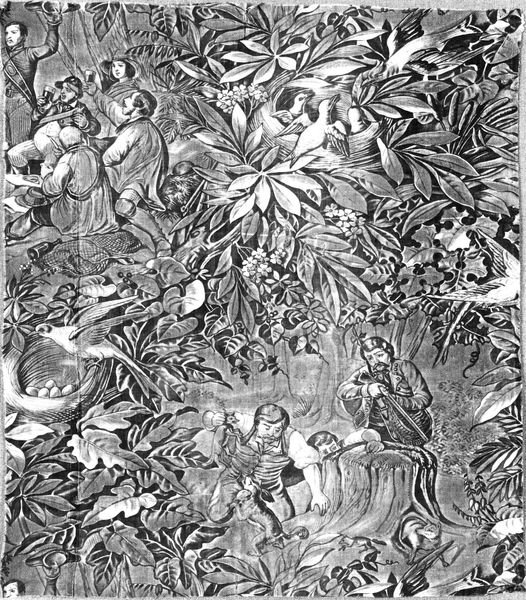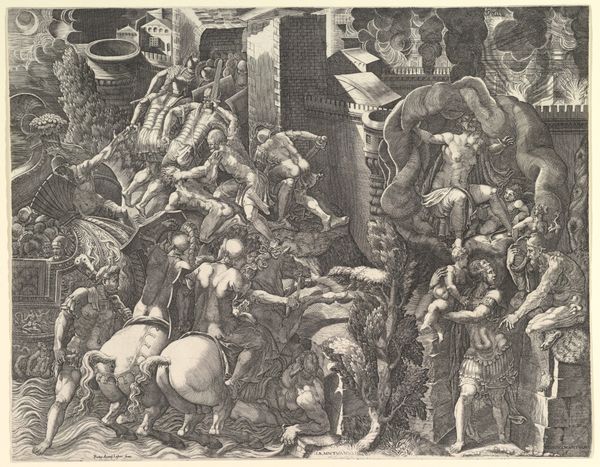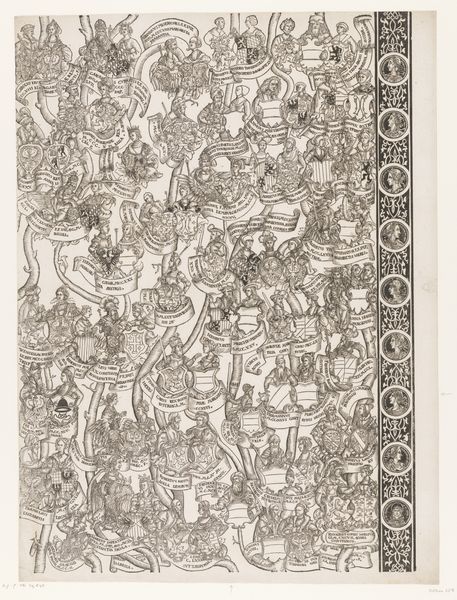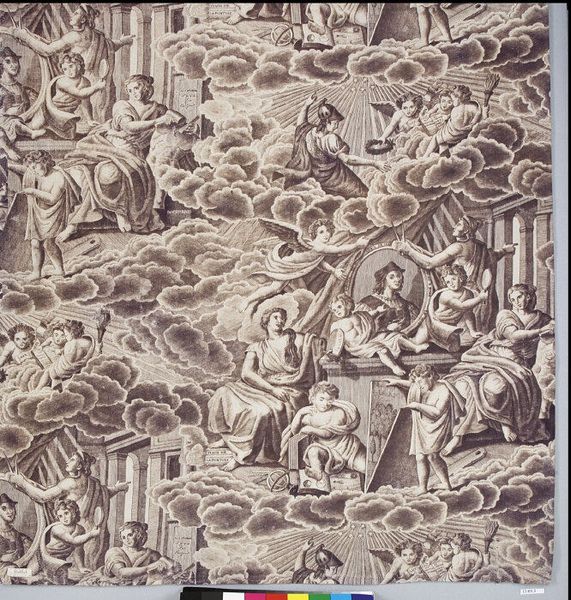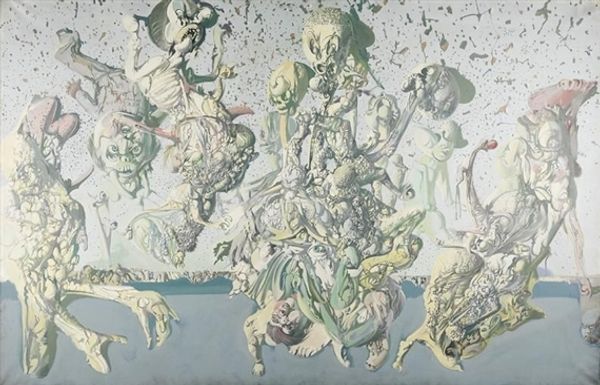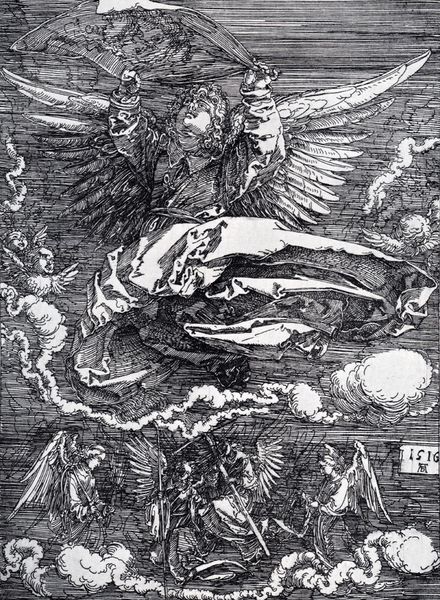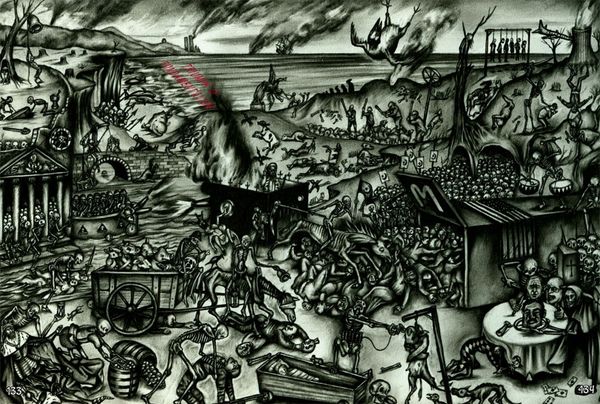
Garrick and Shakespeare with Tragedy and Comedy (Furnishing Fabric) c. 1790
0:00
0:00
print, weaving, textile
#
neoclacissism
#
narrative-art
# print
#
weaving
#
textile
#
figuration
#
text
#
history-painting
Dimensions: 200.6 × 32.4 cm (79 × 12 3/4 in.) Warp repeat: 87 cm (34 1/4 in.)
Copyright: Public Domain
Curator: Looking at this textile, what strikes you first? It's titled *Garrick and Shakespeare with Tragedy and Comedy,* made around 1790. The artist is Robert Edge Pine, and it’s currently housed at The Art Institute of Chicago. Editor: Well, besides the intense detail, the whole scene seems incredibly staged and almost performative. I wonder about the power dynamics inherent in memorializing figures like Garrick and Shakespeare in this manner, especially during a time of significant social upheaval. Who is this for, and what purpose does it serve? Curator: That's a valid point. Commemorative textiles like this often functioned as conversation pieces within elite social circles. They were about projecting a certain image, associating oneself with intellectualism and refinement. This specific piece presents David Garrick, a celebrated actor, alongside Shakespeare. The figures of Tragedy and Comedy accompany them, creating an allegory of the theatrical arts. Editor: Allegory and also ownership, in a way. The implication is that Shakespeare's genius is validated through the lens of Garrick’s performance and interpreted, consumed, by the upper classes. And, considering its intended use as a furnishing fabric, one has to think about the politics of draping oneself in such imagery. Were enslaved persons involved in the making of this textile? How would they interpret such an item, displayed in the homes of those who directly profited from the colonial system? Curator: It’s crucial to acknowledge that context. The rise of Neoclassicism, visible in the imagery here, was often intertwined with imperial ambitions and the construction of national identity. Depicting history, even in a romanticized way, becomes a tool for shaping collective memory and reinforcing specific power structures. This piece speaks to that. Also notice the medium; this was meant to be consumed in an interior setting. Editor: Absolutely. And that consumption extended beyond just aesthetic appreciation. Think of the conversations sparked by such a textile, the ways it subtly reinforced notions of cultural superiority and social hierarchy. Even the presence of tragedy and comedy are themselves framed by that same hierarchy; we get the feeling that everything has its “proper” place. Curator: Right. Examining textiles like this opens a window onto the complex relationships between art, society, and power. Understanding the narratives they construct, and also the ones they obscure, is fundamental. Editor: Indeed, it's a stark reminder that even decorative objects can be powerful tools for ideological transmission. They reflect as much about the patron, commissioner and owner, and how these textiles served certain narratives and cultural dominance.
Comments
No comments
Be the first to comment and join the conversation on the ultimate creative platform.
